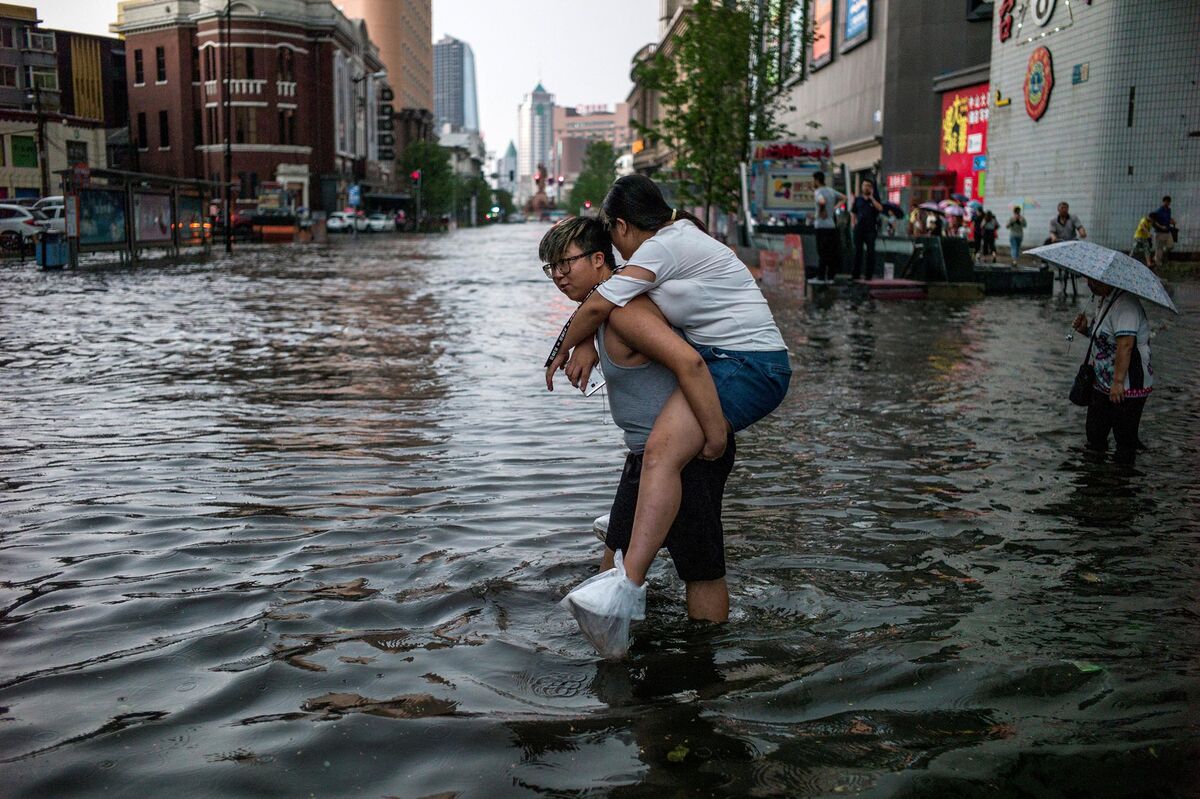
The force of Mother Nature cost mankind $175 billionin 2016, enough money to rebuild New York’s One World Trade Center 44 times. About 8,700 people globally lost their lives or went missing in disasters that included earthquakes in Japan, New Zealand and Ecuador, floods in the U. and China, and Hurricane Matthew in the Caribbean. That compares with $380 billionin 2011 when earthquakes in Japan and New Zealand pushed economic disaster losses to a record. In both years, less than a third of the damage was covered by insurers. Why don’t people carry more insurance against disasters?
For starters, insurance is less accessible and less affordable for people in poorer nations. Elsewhere, the insurance industry struggles with what’s known as negative selection, which means clients tend to buy coverage only for the risks they are most exposed to. If you own a house on a storm-exposed shore in Florida, you might think more about disaster insurance than if your house is in the countryside. Another factor: Many people expect their government will compensate them for damages in natural disasters. This is one reasonwhy insurance demand is low in earthquake-prone regions in countries such as Italy or Turkey. Can insurers offer more appealing coverage?
It’s not so easy. Insurers face challenges in balancing the statistical risks of disasters, the potential payouts involved, and consumer demand for policies, which rarely align. Demand itself tends to wax and wane, depending on how much time passes between catastrophic events. One key is diversification: In order to be able to pay claims from the largest disasters (typically windstorms and earthquakes in the U., Japan and Europe), an insurer needs to do enough business elsewhere or set aside enough capital to pay for potential claims. So who pays the bill after disasters?
With insurers covering only about a third of the damages, the protection gap is substantial. Government-created organizations like the California Earthquake Authority and the Texas Windstorm Insurance Association act as insurers of last resort, offering coverage the free market won’t provide. Turkey requires earthquake insurance for urban residential buildings and provides coverage, in conjunction with the World Bank, through the Turkish Catastrophe Insurance Pool. Caribbean nations formed a catastrophe risk poolthat paid Haiti $23 million following Hurricane Matthew (a fraction of the $1.4 billion in total damages, reflecting the lower use of insurance in poorer countries). Chile, Colombia, Mexico and Peru are discussing a similar pool. One of the financing tools that these pools have are catastrophe bonds. What are catastrophe bonds?
They’re securities sold by insurers, the reinsurers who back them or government-backed catastrophe pools. Cat bonds help them spread the risk of paying out on disasters. Buyers of the bonds enjoy higher returns when Mother Nature is quiet. Most cat bonds cover against U. wind risks, which led to some of the insurance industry’s biggest losses in the past. Cat bonds are about 25 years old and have yet to be fully tested by a major loss. It remains to be seen how investors would react if a hurricane or earthquake wiped out a whole series of them. Are natural disasters really on the rise?
Yes, according to reinsurers such as Munich Re and Swiss Re, which help primary insurers shoulder costs from catastrophes. Munich Re counted 772 “natural loss events” last year, up from 248 in 1980. Of course, reinsurers might be biased, since they make their living from helping offer coverage against catastrophes. It’s also possible that some disasters recorded today would have gone unnoticed in decades past. Of the more objective sources, the World Health Organization says that the number of disasters has been declining over the last 15 years while the United Nations Office for Disaster Risk Reduction reports a rise to 346 in 2015 from 205 in 1983. Is global warming a cause?
While the Earth is warming, there’s still a debate about whether that results in more or fiercer storms. Less open to debate is that a hurricane’s devastation has become more expensive after a period of intense coastal development and more expensive buildings in many parts of the world. Now, about three billion people, almost half the world’s population, live within 200 kilometers (124 miles) of a coastline. In a similar vein, the dense packing of cities raises the stakes for events like earthquakes and heat waves. What are the costliest natural disasters?
According to Munich Re, the earthquake and following tsunami that hit Japan in 2011 tops the list of the 10 most costly natural disasters since 1980, with an economic loss of $210 billion. That’s followed by Hurricane Katrina in 2005 with $125 billion, most due to the storm surge that caused breeches of levees in New Orleans. There may be more to come. Risk Management Solutions Inc. calculated that a repeat of the 1923 Tokyo-Yokohama earthquake today could result in a $670 billion damage. What else can be done to limit disaster damages?
More disaster-proof building would probably have biggest impact on future losses from natural hazards.7 billion people lived in a city with at least 1 million inhabitants, according to the United Nations. Some of these cities are investing heavily in disaster protection. Tokyo built a massive underground flood diversion facility and New York is planning a protection system around lower Manhattan.
The Reference Shelf.


0 comments:
Post a Comment